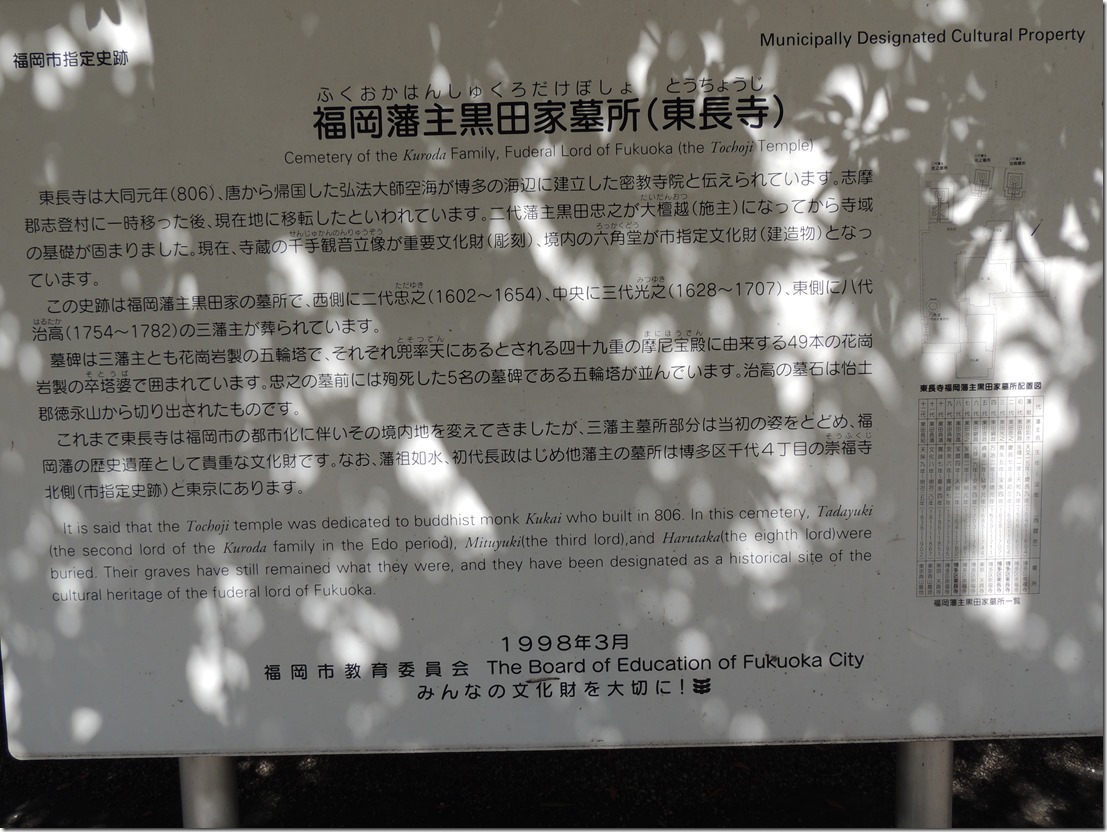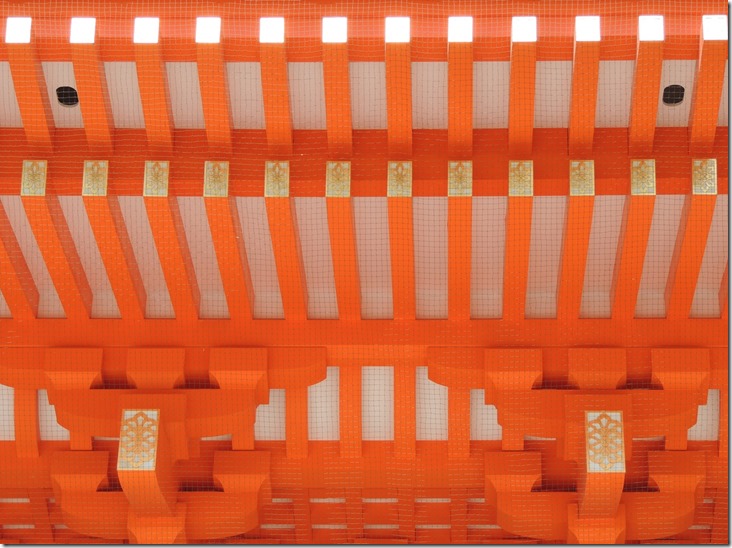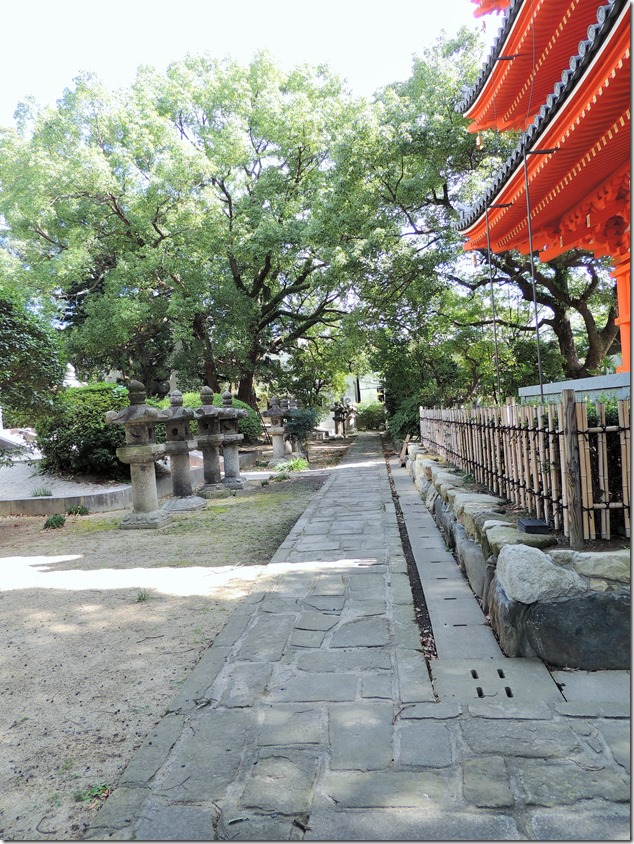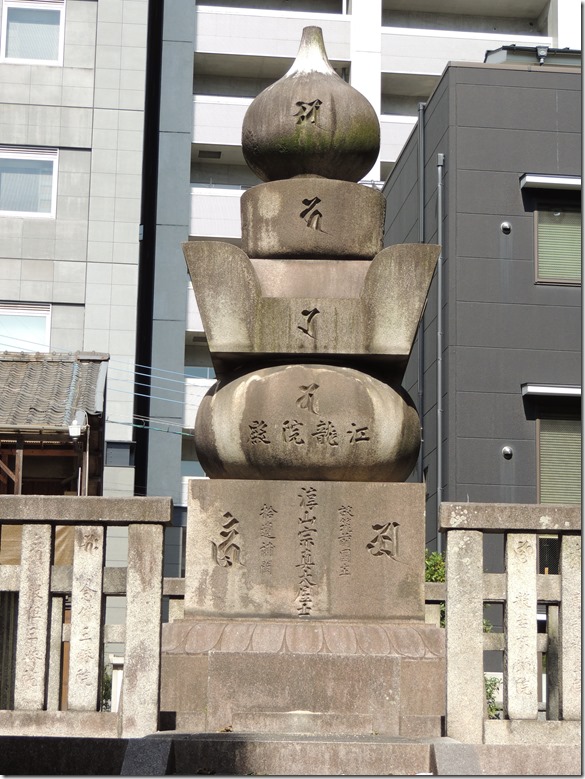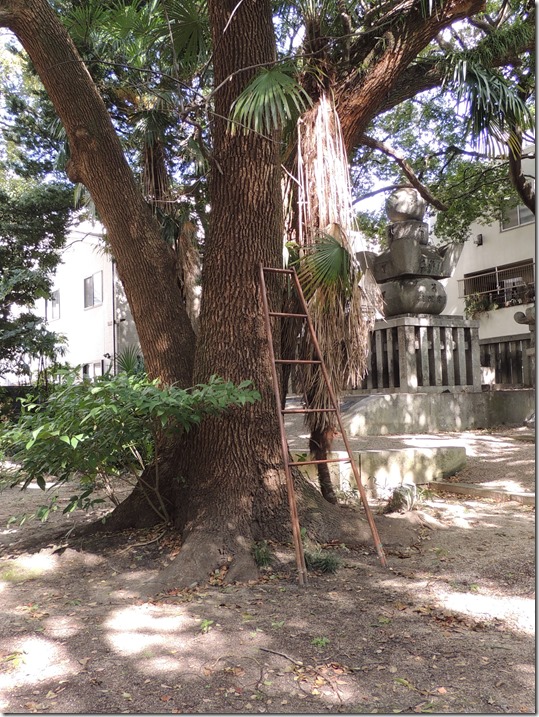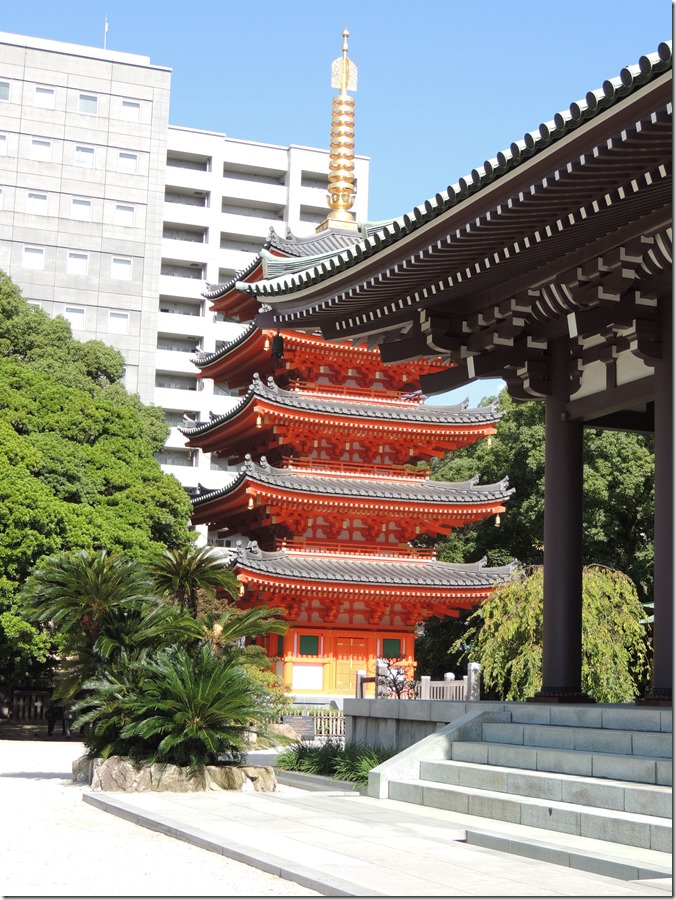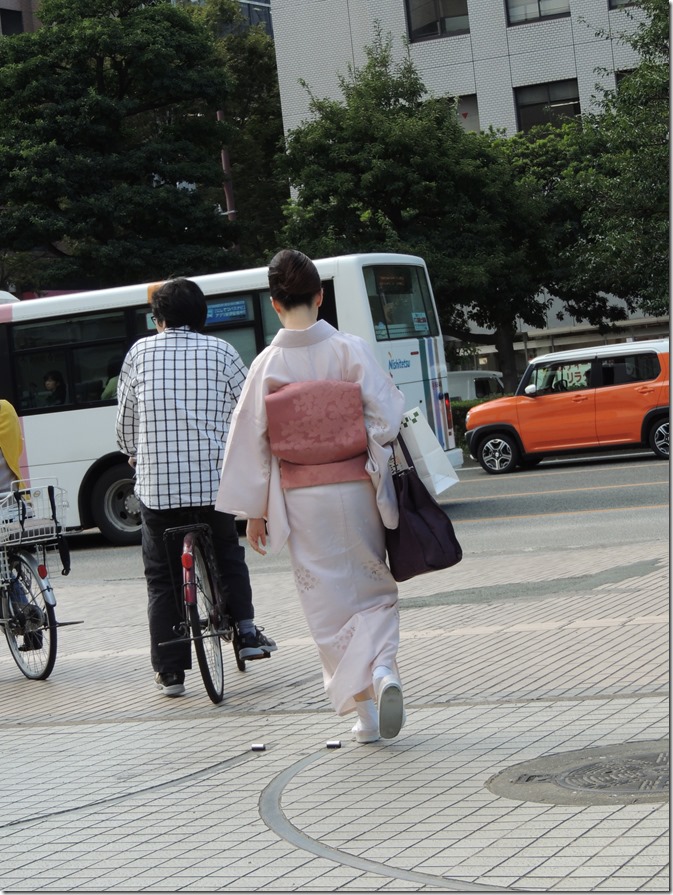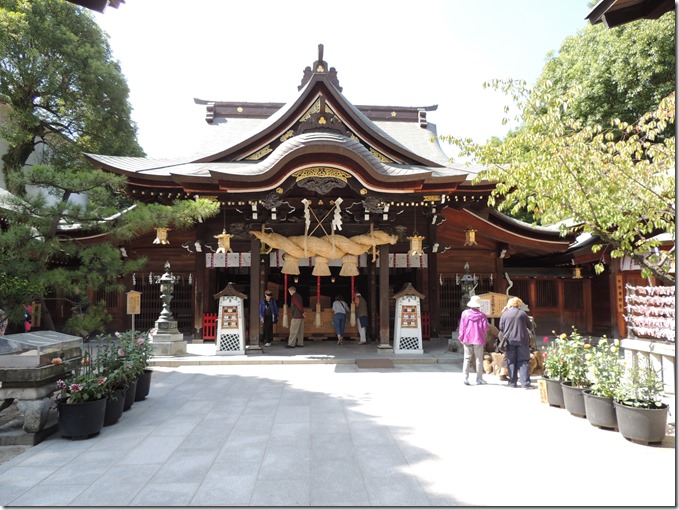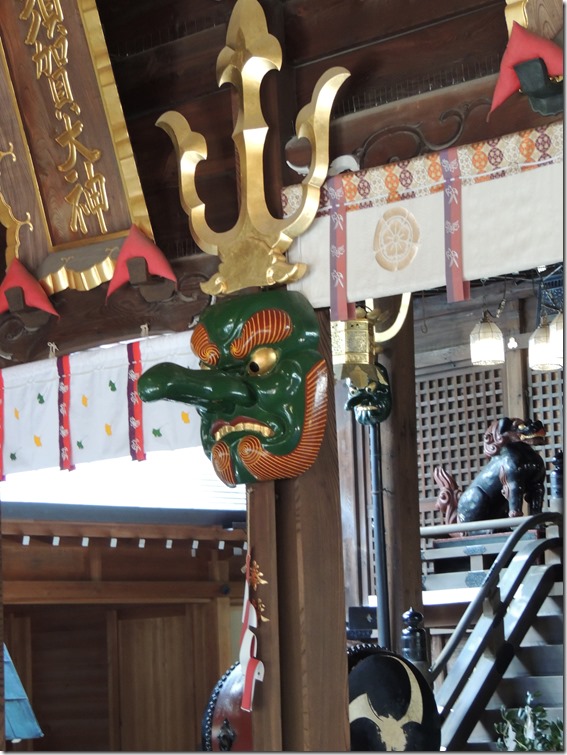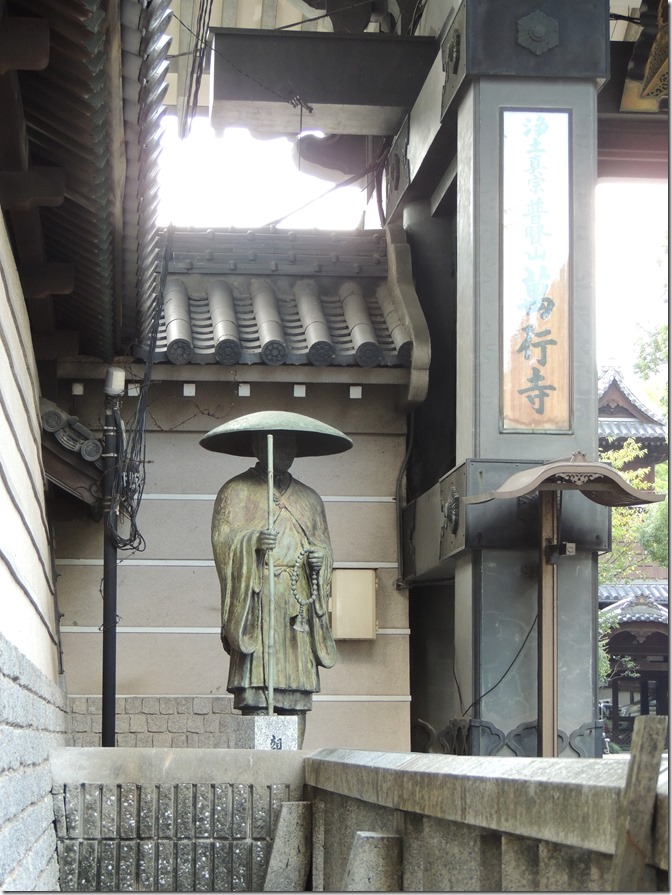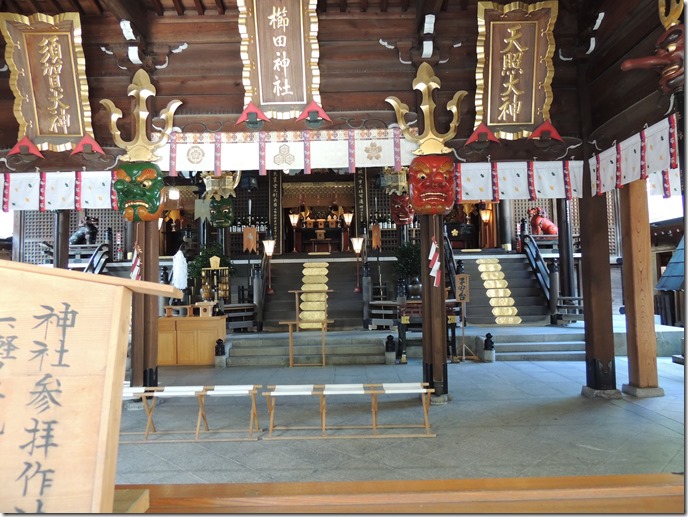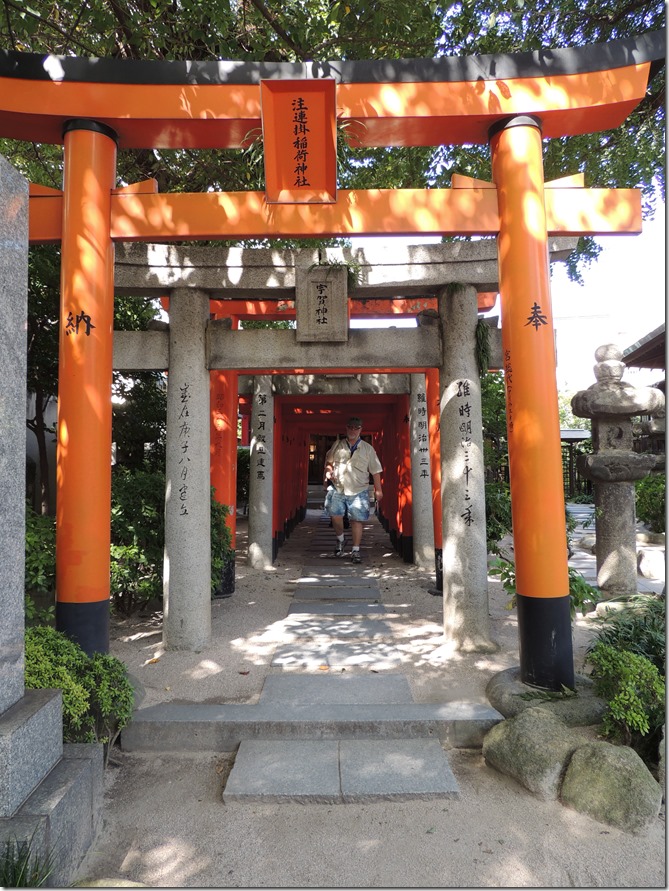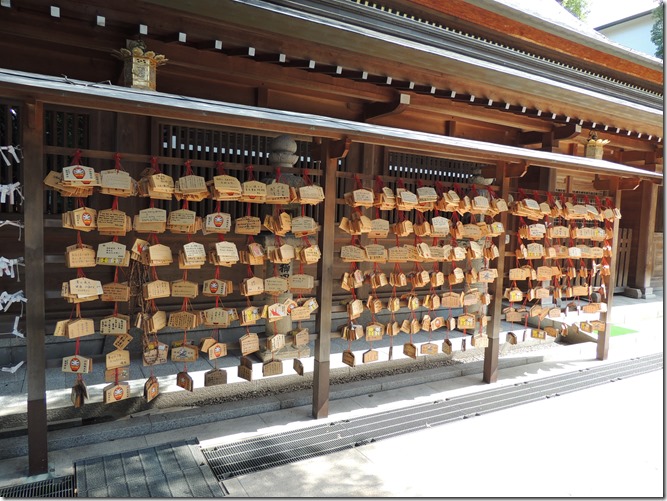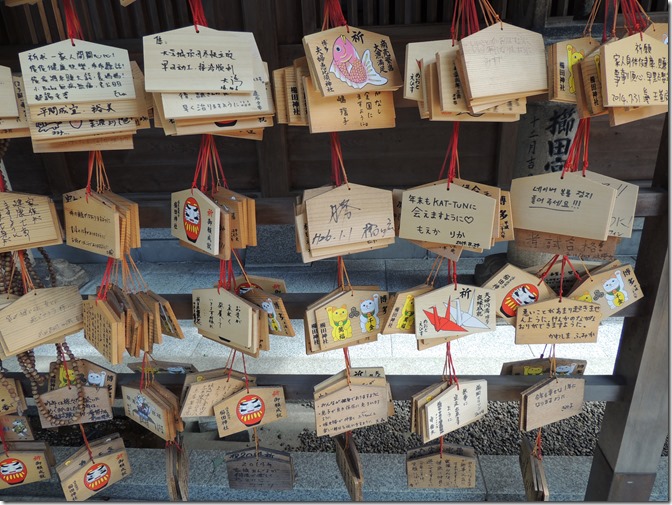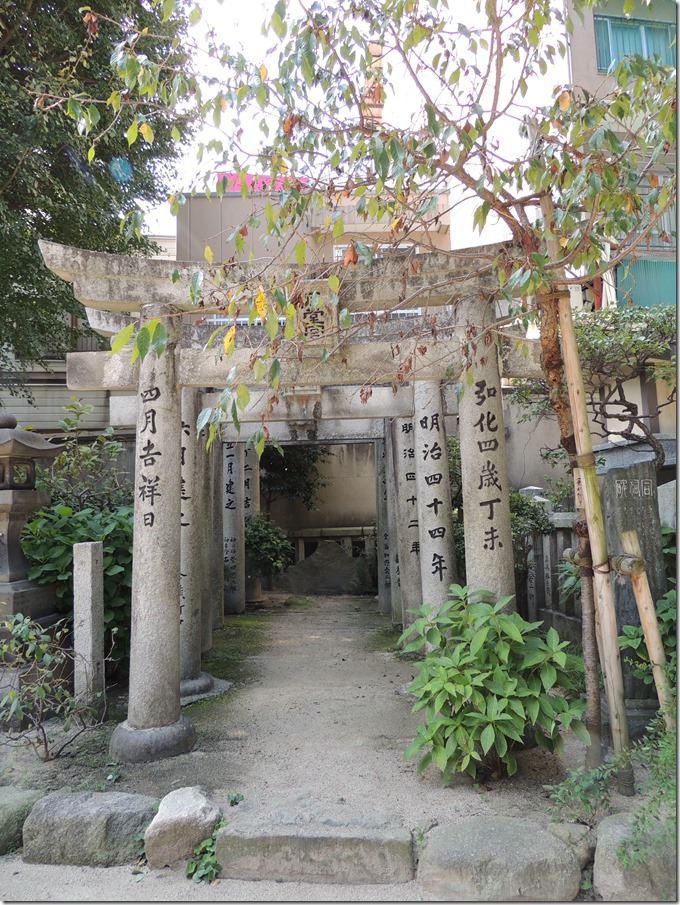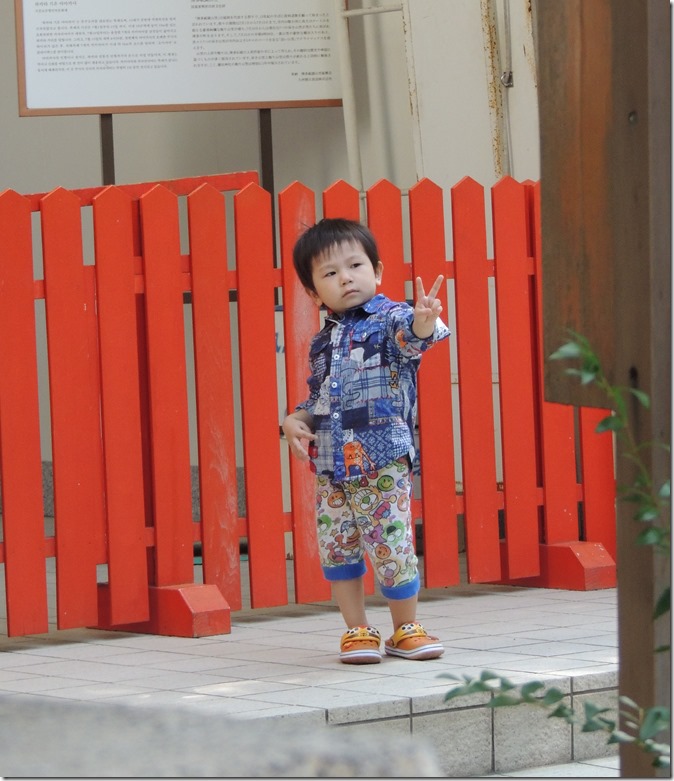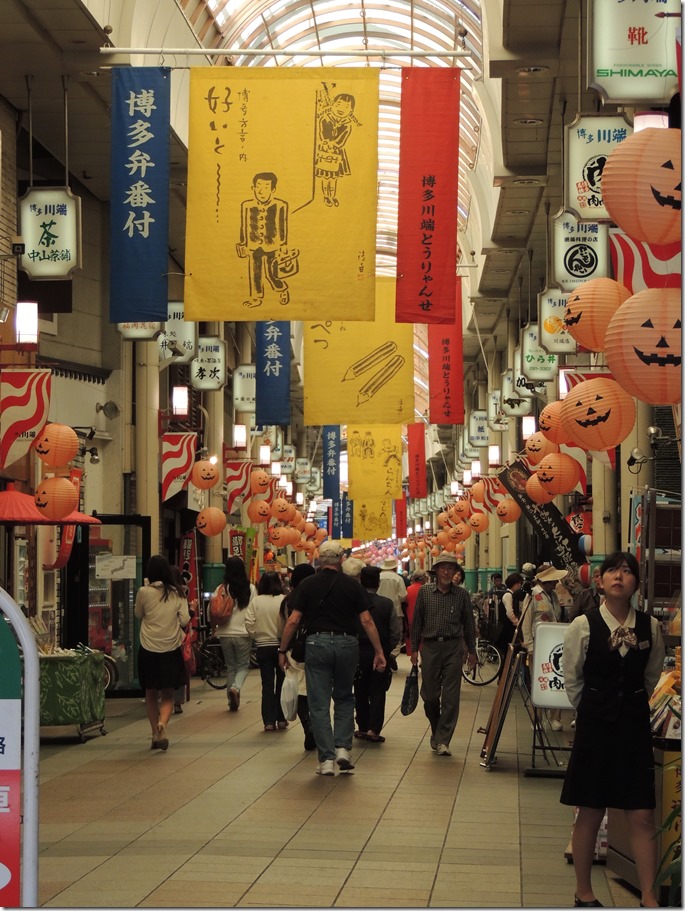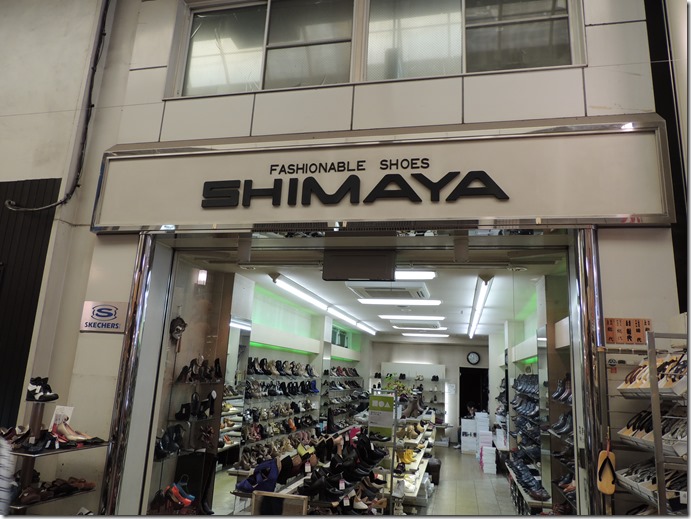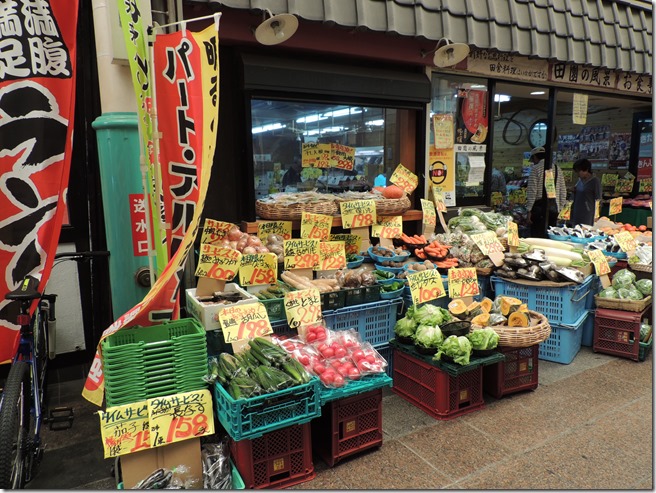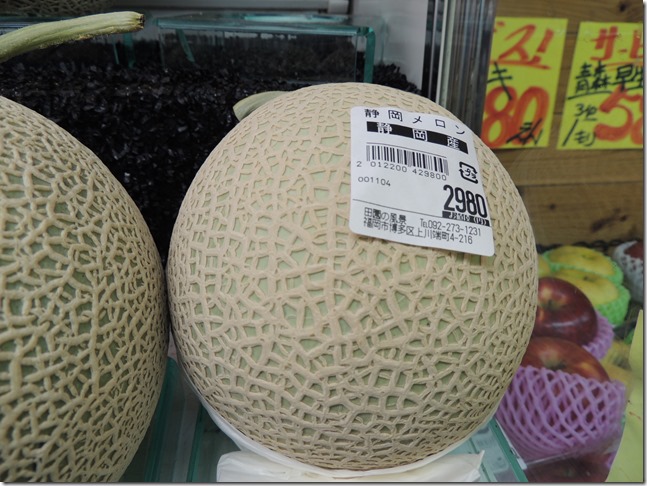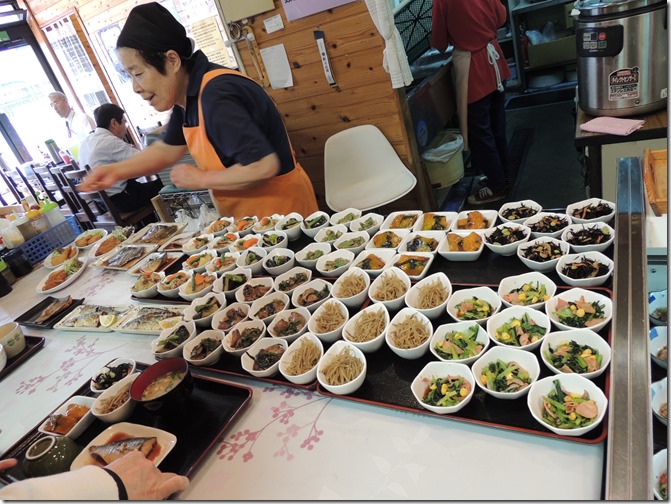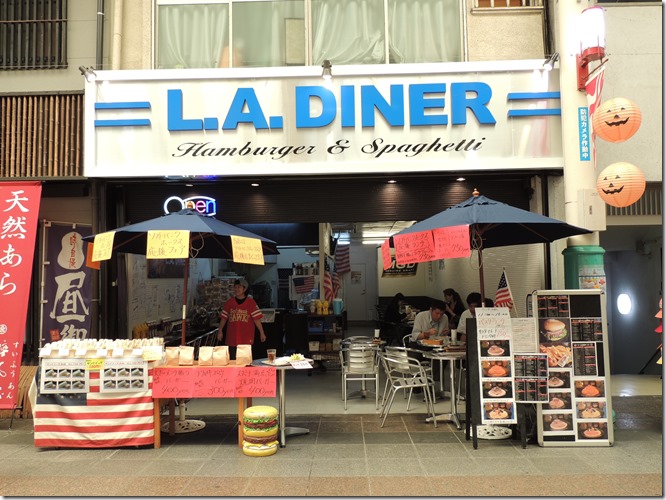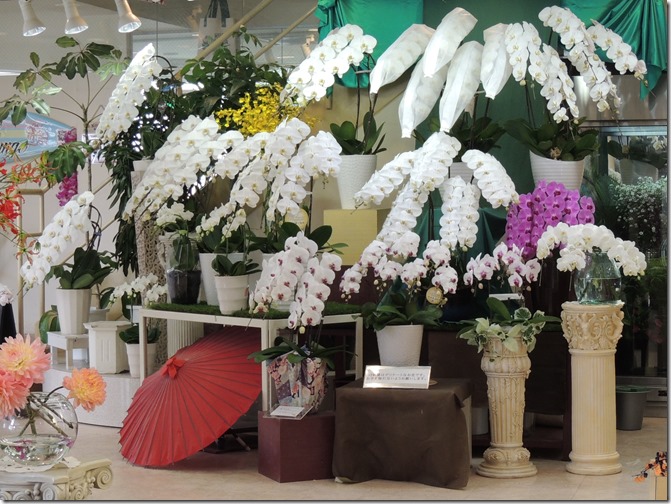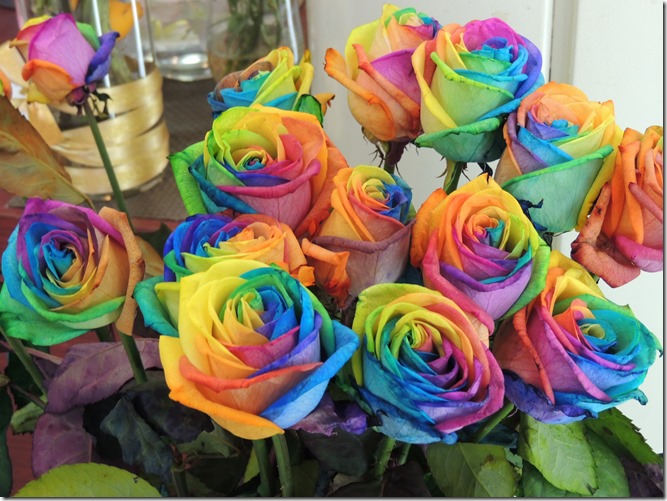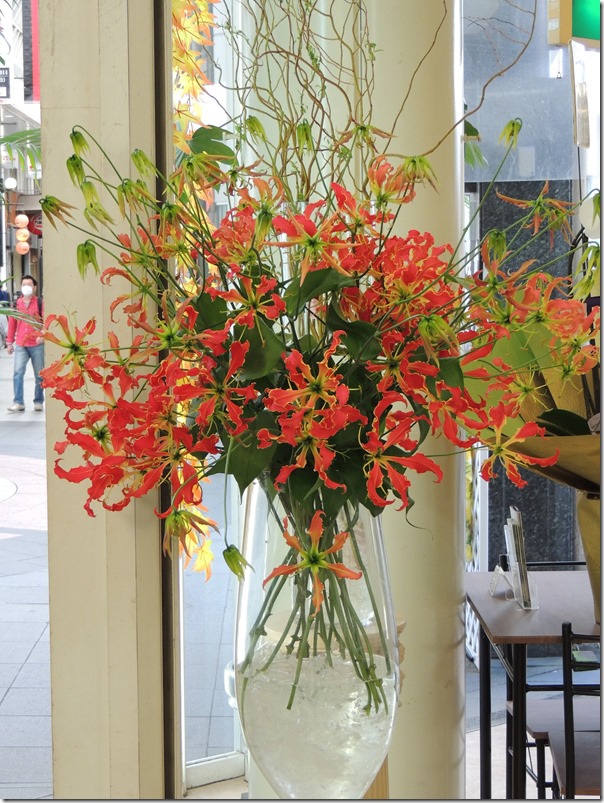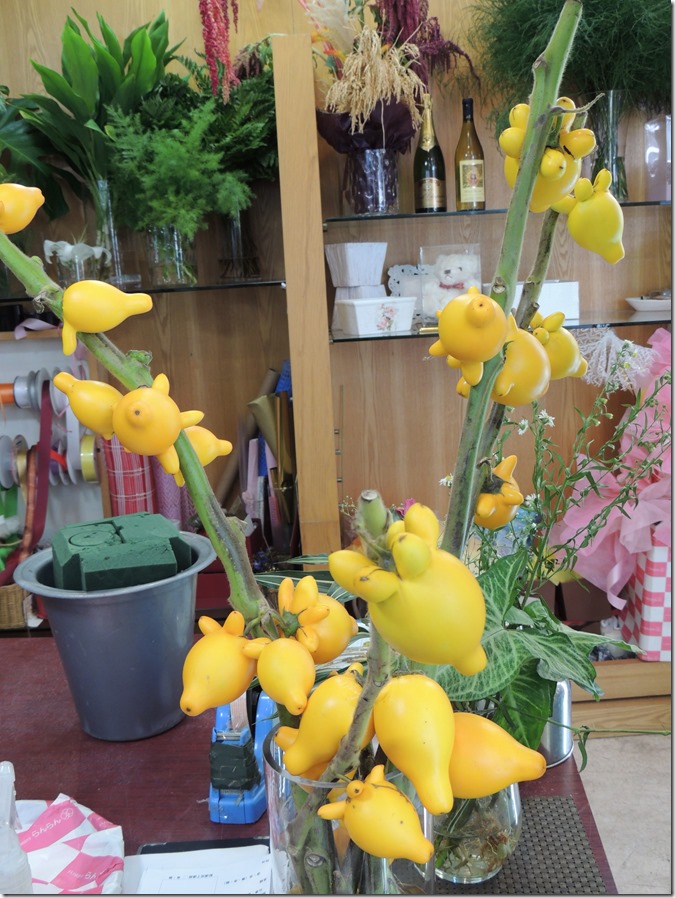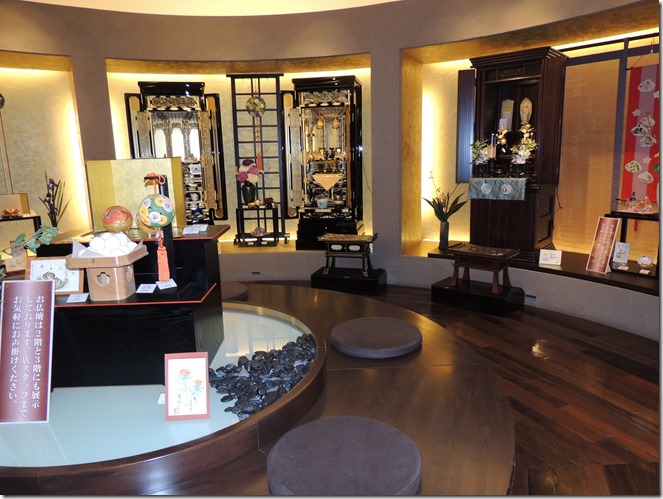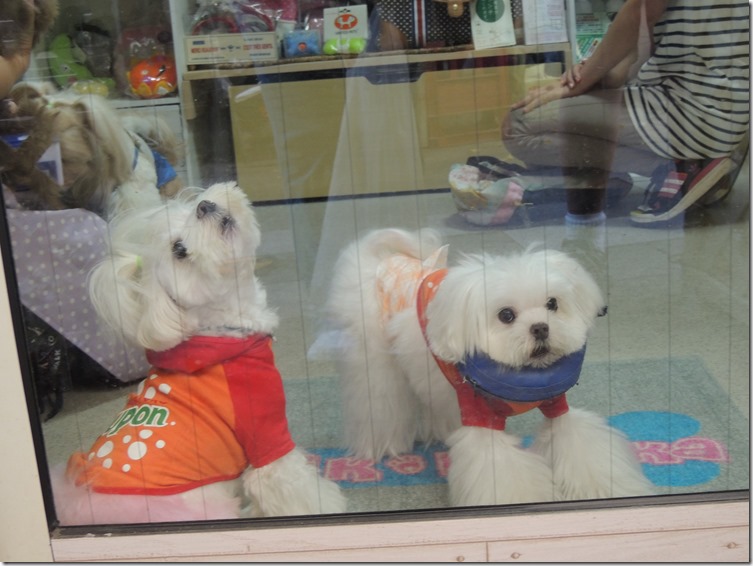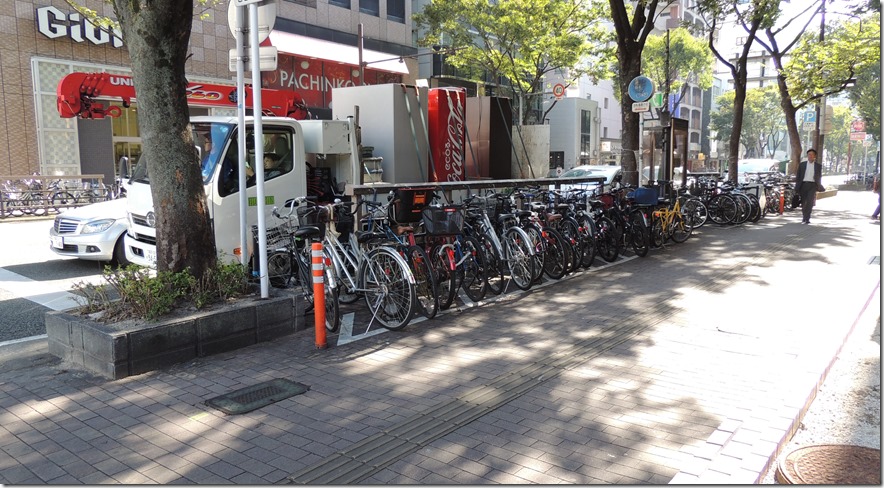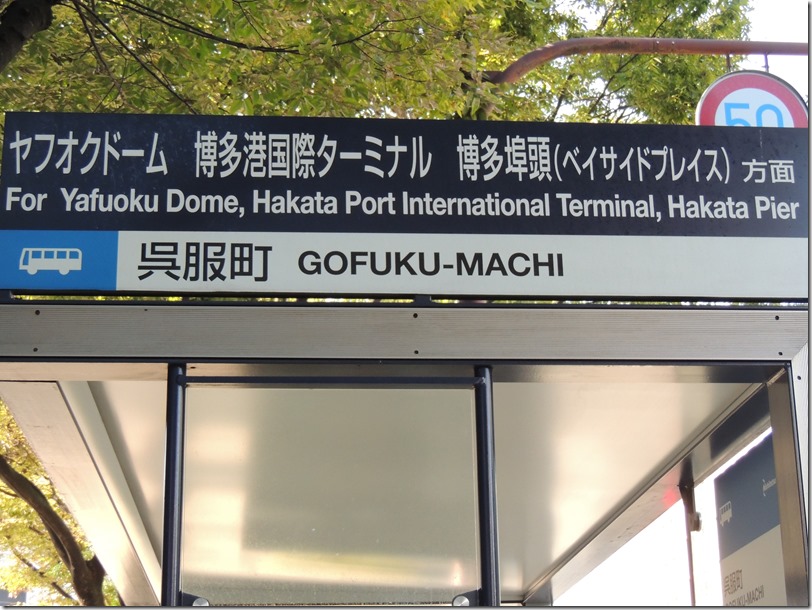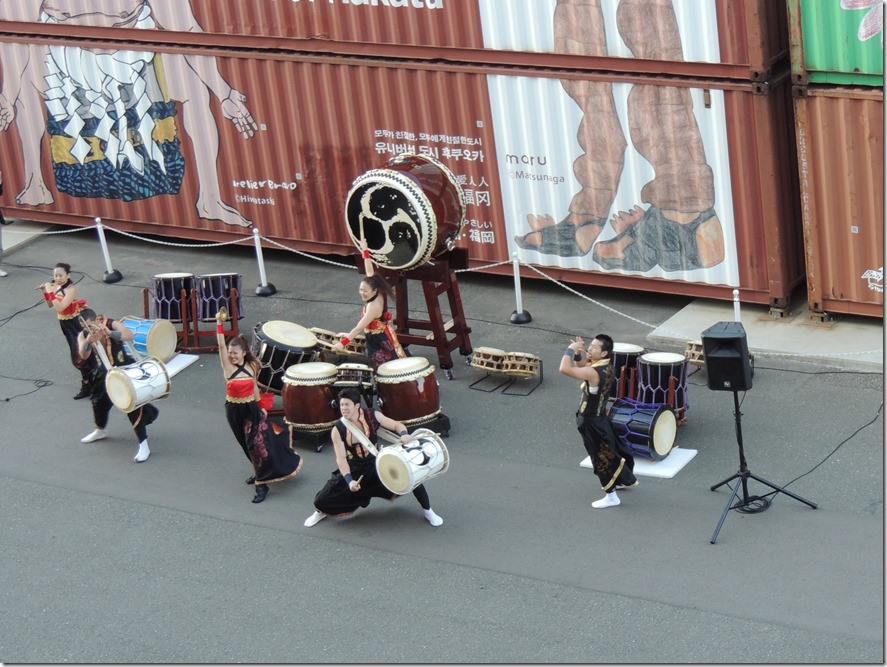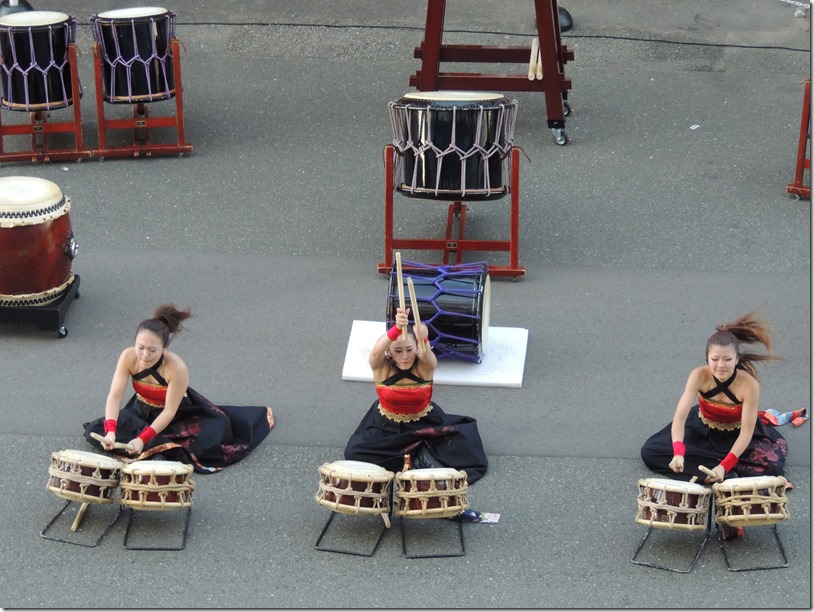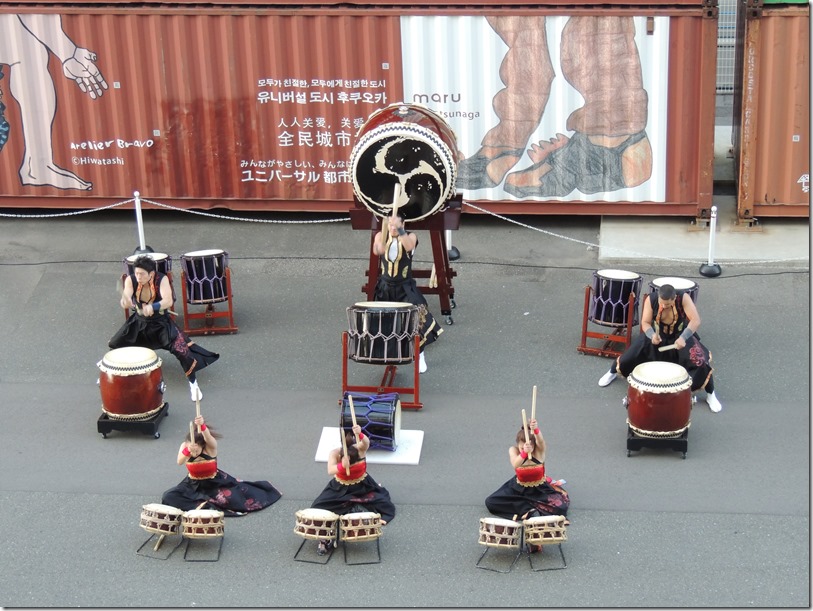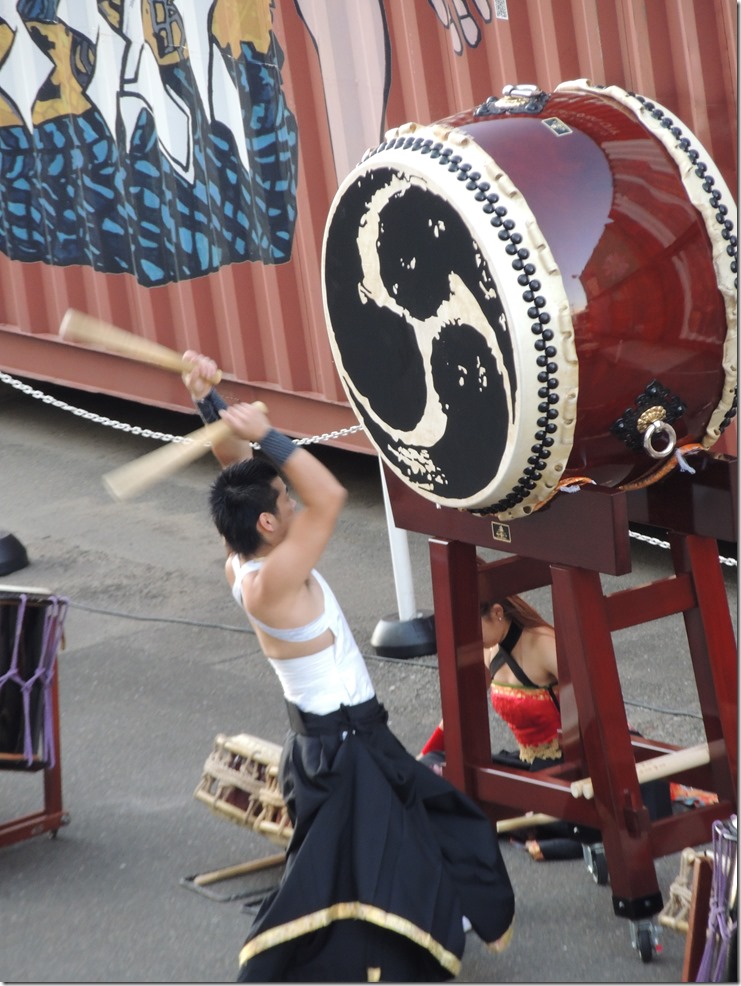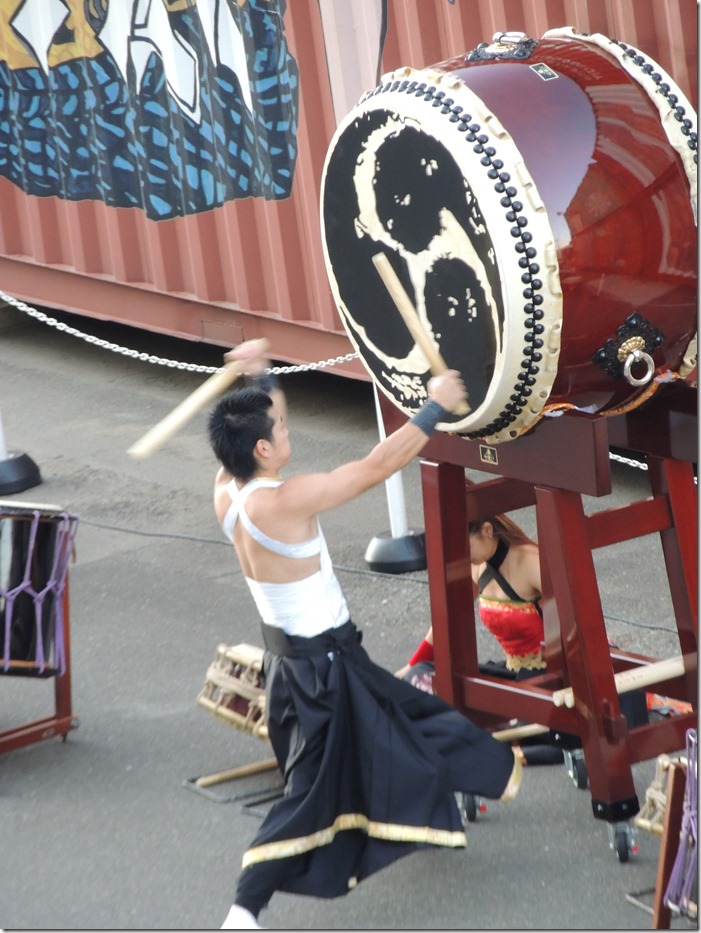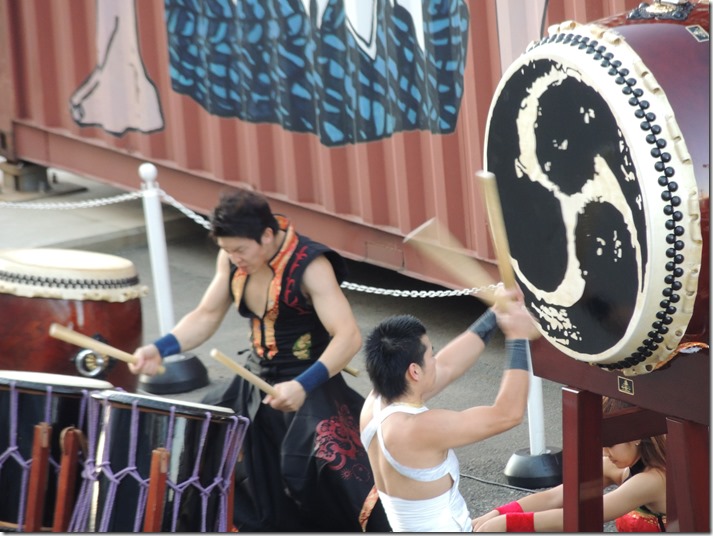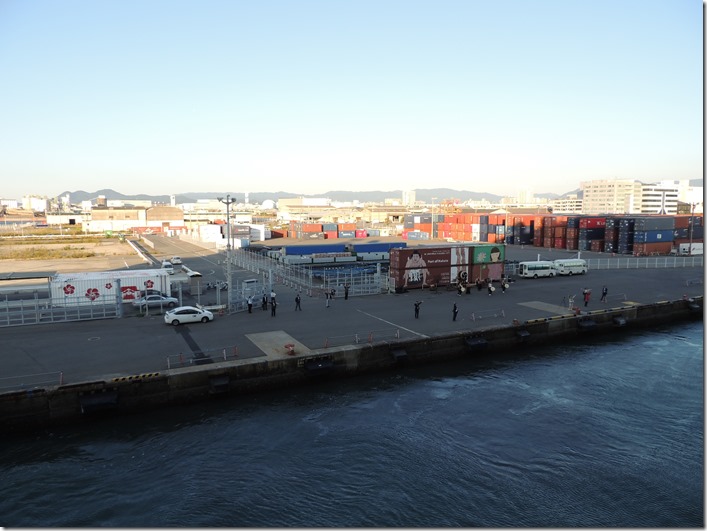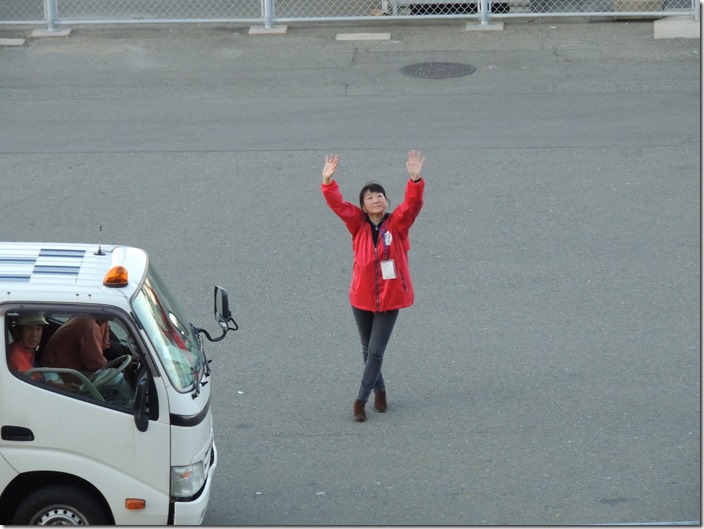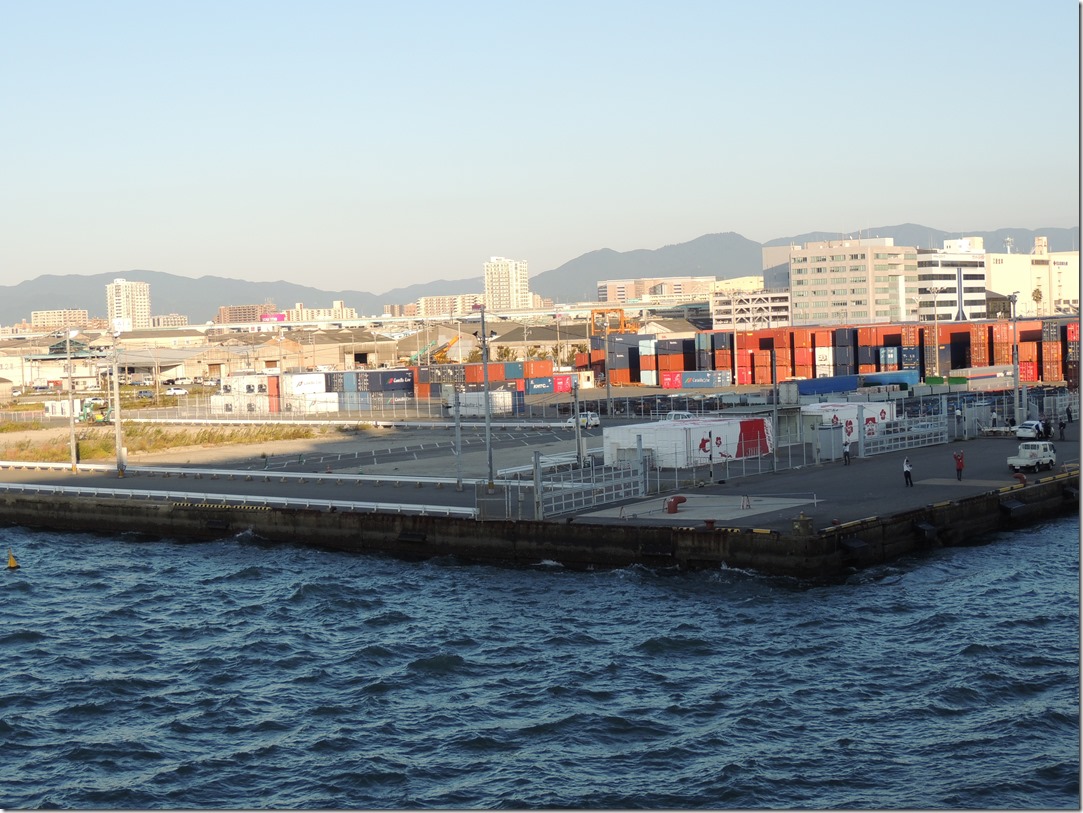From Kal’s Journal:
On Tuesday, October 7th, after a day at sea, our ship landed in Fukuoka, also known as Hakata. Originally these were two side-by-side cities, but in 1899 they voted to unite. Now the names are used interchangeably, although Hakata is generally used to refer to the older part of the united city. We picked up maps from the Tourist Information booth provided by the local municipality and headed out to visit what is the oldest Zen Buddhist Temple in Japan.
But first a word about Japanese maps in English for tourists. All these maps are written in both English and Japanese, which makes sense since if you are trying to get somewhere and ask a non-English-speaking local (this includes most of them) for help, at least they will be able to read the Japanese characters on the map, and maybe they can give you directions in a “Charades”-like conversation. However, with the exception of Kanazawa, none of the Japanese cities we visited (and we received tourist maps from all of them) had clear bus or trolley routes. Yes, the routes were shown on a map, but in Fukuoka, for example, the number of the bus route from Point A to Point B was different from the number of the bus route from Point B to Point A along the absolutely identical route. It was often very confusing to try to figure out where the actual bus stop location was and especially, to figure out the bus route numbers for many of the routes. Maybe this was just an off-day for me, but I am an excellent map-reader, and if I had a difficult time, I can only imagine what others experienced. On the other hand, Japanese maps, much like the Japanese themselves, are extremely thorough, complete and precise. Virtually every temple and shrine was marked. Every commercial building of any seeming significance or “status” was marked. Every shopping mall and arcade seemed to be displayed. All the streets and alleys, in central Fukuoka and later, in central Nagasaki, were shown. All the bus, trolley and subway routes were shown, and all of them are color-coded so they can be easily followed (if you know the proper bus number along your desired route/s).
The Temple in Fukuoka was established in 1195 CE by Ensai, a Buddhist monk from China who introduced both Buddhism and tea to Japan. It lies situated in downtown Fukuoka and is surrounded by a high, perhaps an 8-foot, wall. Once you step onto the Temple grounds, you immediately feel a sense of serene refuge from the hustle and bustle of the modern Japan outside the wall. The footpaths throughout the Temple grounds are covered with a highly pulverized stone, probably grey granite, which emits a crunching sound when you walk on it. The large Buddha of this Temple is found on the 2nd story of the main Temple building. The Buddha appears to be 25-30 feet tall and is in a sitting position. The statue is carved out of wood and highly decorated, and the background that frames the Buddha is carved out of wood with highly ornate designs. The main Temple is fairly large, although not as large as others we have seen in Kita- Kamakura in the past. As we walked up the concrete steps to the Temple entrance, a prominent sign said “Buddhists Only”, so clearly the Temple monks wanted to restrict entry to those actually there to pray and not to sight-seers.
Before entering Buddhist and Shinto Temples it is customary for believers to “cleanse” themselves by washing their hands. In this Temple was a structure off to the side that appeared to be something like a shallow well with a stone cut in the patterns of a lotus blossom in the center, and two ladles for filling with water from the well for the purpose of pouring over one’s hands.
The Temple also had a tall, perhaps 8-story, pagoda-like building with a tall polished brass point (could it possibly have been real gold and still be there?) at the top. We never learned what the building was, but it’s bright orange color made it a stand-out attraction in the Temple. As with all fine crafts we have seen in Japan, which all seem to be made with great care, respect and love, the finishing’s on this building were made of what looked like ½” to 1” white square tiles highlighted by gold-colored grout. It was like applying these white tiles to the cut ends of 4X4” pieces of wood that faced outward, in order to beautify them. And there were hundreds of these “exposed ends”, reaching all around the various roof levels of the pagoda and all the way to the top.
The Temple also contained what appeared to be a cemetery, perhaps for monks who had served or for personages important in the life of the Temple through the ages. The inside of the portion of the large outer wall facing the street wall contained what appeared to be 2-foot high statues of the Buddha in 4 or 5 repetitive poses. I don’t know whether this was merely decoration or whether it had some symbolic or other meaning. Regrettably, we could not find any monks on the premises to ask.
From the Temple we continued on foot for several hundred yards and turned down a side street, on our way to a shopping arcade Nina wanted to visit, when we came to what was apparently a major Shinto Temple in the downtown heart of Fukuoka. The grounds of this Shinto Temple seemed even larger than those of the Buddhist Temple. In Japan both Buddhism and Shintoism are practiced, and I am told that many believers practice both. They share some similar rites, such as washing the hands before prayer, but in the Shinto faith rice seems to play a big role. Rice stalks are woven into fancy ropes for Temple decoration, people write their wishes on rice paper and ties the strips of paper to what I can only describe as a square “wishing fence” made of wood, and of course rice offerings are made to their gods. Upon entering a Shinto Temple you are confronted with a pair of large and horrific-looking face masks hanging from one of the Temple rafters closest to the entrance. These face masks are there to ward off evil spirits that might enter the Temple and disturb the worshippers. As in Buddhism, in the Shinto faith one removes shoes before entering the sacred space of a Temple. In Shintoism respect at the Temple is shown by bowing twice and quickly clapping twice after saying what appear to be private and personal prayers, then putting some coins into a collection (charity?) box, lighting a candle and burning incense. In Shinto Temples there is also a practice of writing wishes (for health, wealth, love, return to here, etc.) on small, thin planks of wood about 4X6” and tying them to a wooden “wishing fence”. Sometimes the wood planks are also decorated. We saw messages in Japanese, English, German and French. We first saw this same practice two years ago at the huge Shinto Temple in Kita-Kamakura.
After visiting this Shinto Temple we left via a side entrance that led to a small alleyway which emptied onto a downtown side-street. There were many food stalls and small shops on this side-street, but at the bottom of the stairs leading down from the Temple was a food stall where the proprietor was making fresh sweet red bean rolls and selling them. There was a long line of Japanese locals waiting to buy, so we got into line. We had eaten these red bean rolls before, in an Asian market in Phoenix, where there, too, the rolls were made before our eyes. While red bean paste rolls may not sound particularly appetizing to a western palate, the red been paste filling is a bit sweet, and the rolls themselves kind of sticky-chewy, as if the baking were not quite finished. And man, are they good! We each had one, and then, who should show up but a busload of people from one of the ship’s organized tours, including many people we knew. Of course they saw us eating the rolls and wanted to know what it was, how does it taste, etc., and a few moments later a line of about 20 people from the ship are standing in line to buy and try….
We finished our red bean paste rolls as we walked toward the shopping arcade we had originally been headed toward, as Nina was looking for yarn and for a few souvenirs. Shopping arcades in Japan (different from malls) are indoors, but they are narrow shopping strips that may run for several blocks with street-like cross-strips every few hundred yards that have more shops. It’s kind of like the main street in the Old City, but everything is under roof and there is no merchandise displayed in the areas that serve as walking paths in the arcade. However, the shops are deceptively small as you can only see the outer facade of the shop from the street. To see the entire shop, you need to go inside, and once inside you can find stores as large as any major chain store in the USA. Japan has what they call 100 Yen stores, which are like 99-Cent stores or Dollar Stores and that are easily as big or even bigger than those in the USA, and a lot more merchandise is crowded into some of those stores than in their USA equivalents. Nina was looking for – and found – large cooking chopsticks, since she does a lot of wok cooking. And – surprise, surprise! She even found three—pack sets of these large, bamboo cooking chopsticks with the tops painted
A grave with head stone for one of the monks.
Leaving the temple. Would you wear a kimono everyday? And the shoes????
The Shrine
Masks hanging in the Shrine.
Prayers written on paper and tied, similar to the Western Wall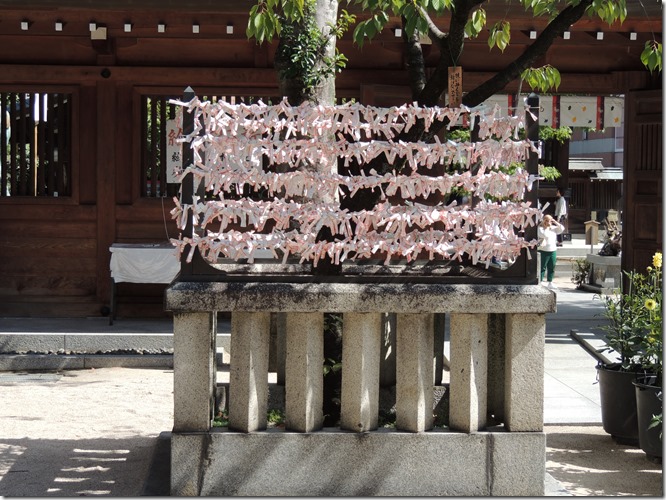
The Gate. There are Gates to enter everything, from cities to Temples to China Towns
Wishing plaques
The old stone Gates
The best sweet bean paste buns! Yum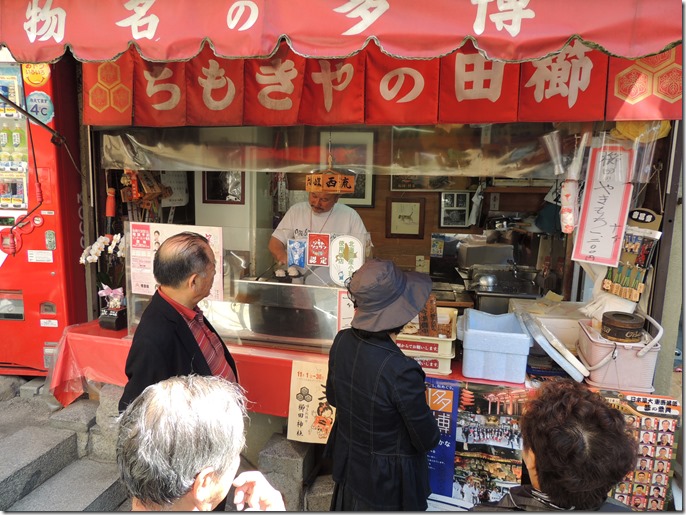
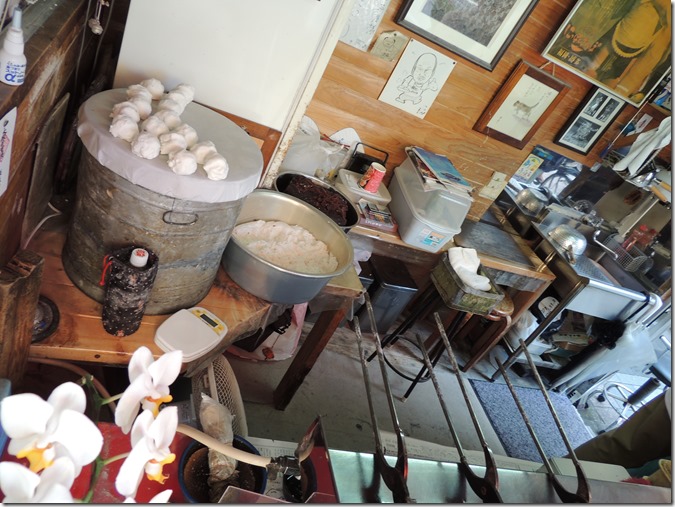
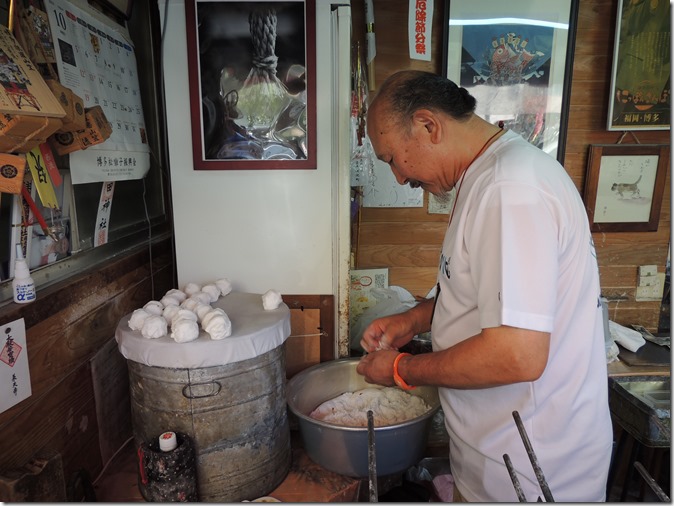
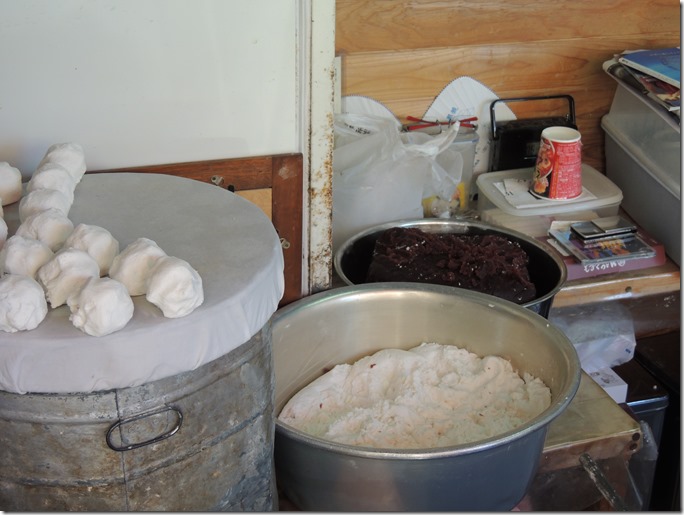
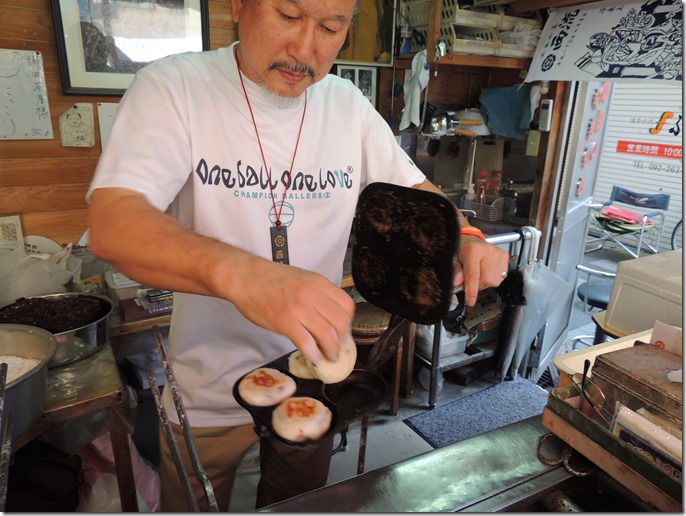
Another food stall. I guess I won’t ask for a tea from this one! 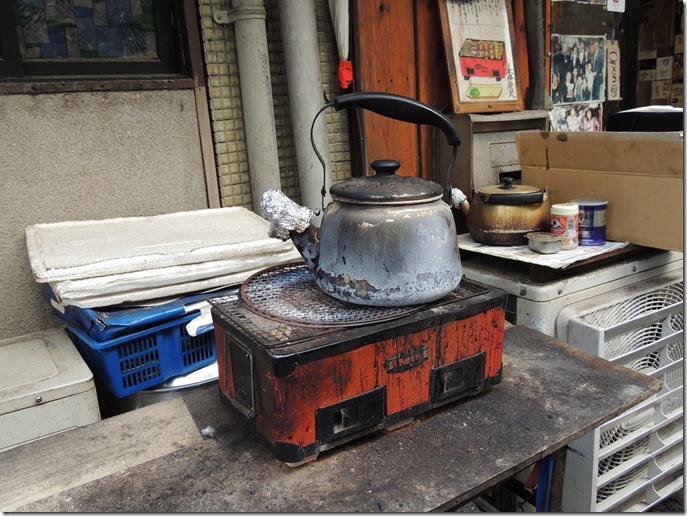
The enclosed shopping arcade.
“SHIMAYA???”
One Yen equaled one penny. So 100 Yen is a dollar. The melon is $29.80
